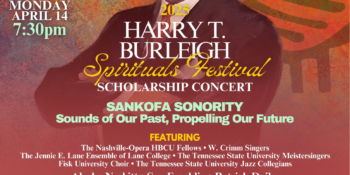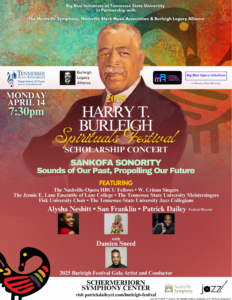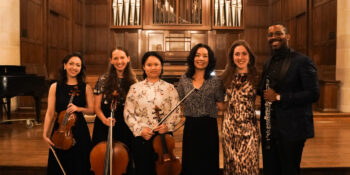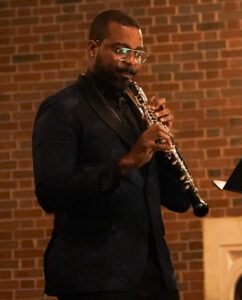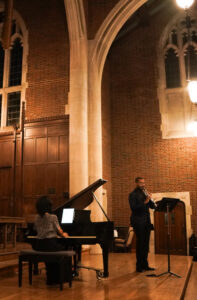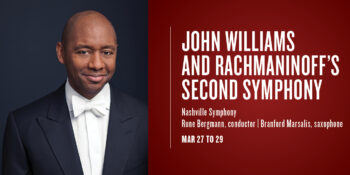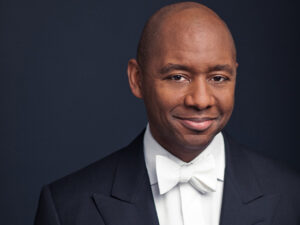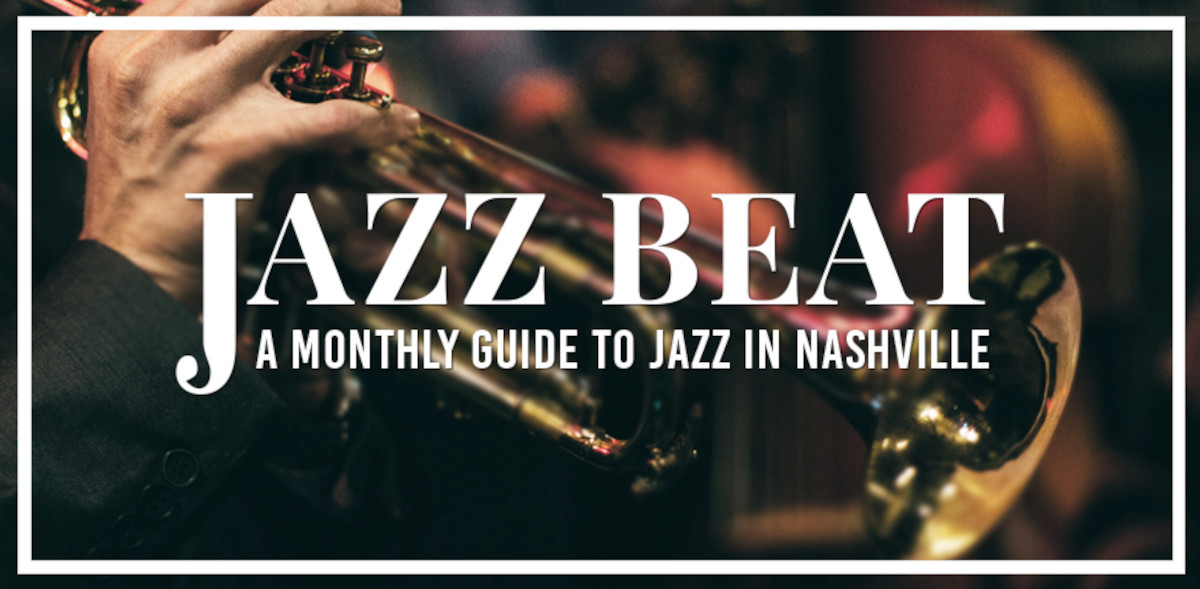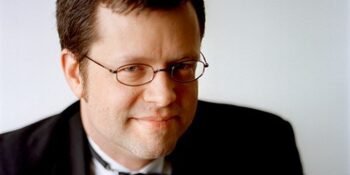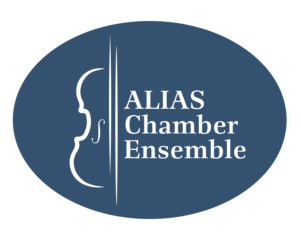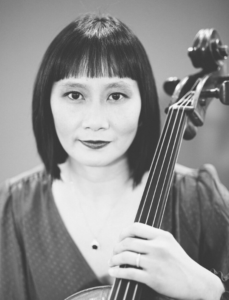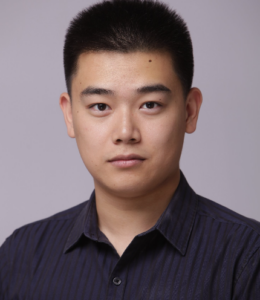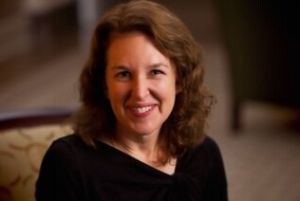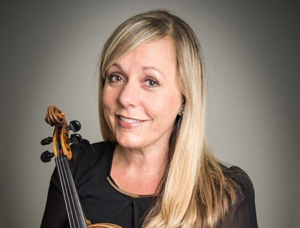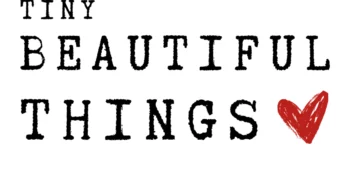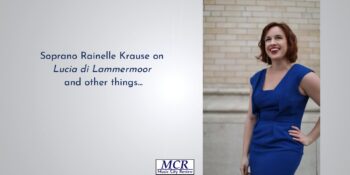The Jazz Beat — April 2025
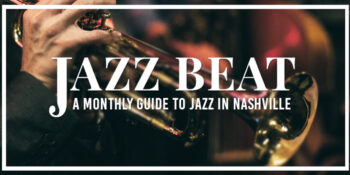
Hello, all, and welcome back to this regular column here at Music City Review. Here, we will update you with the most can’t-miss jazz events happening in Music City, so you can be sure to catch all your favorites, as well as discover new ones along the way. Get out there and support your local musicians and keep Music City thriving! We are always looking to promote great music that may not get the attention it deserves. Have an event you think should be included in the next issue? Email me at: JazzBeat@musiccityreview.com
This Month’s Highlights
Here are the performances this month that I have picked out as really special, ones you won’t be able to catch any day of the week. They span across Nashville’s many great jazz venues and offer something of interest for everyone.
Lyle Brewer – Sunday, April 6 – 7:00 PM (Layman Drug Company) ($33)
Boston-based guitarist Lyle Brewer writes original solo guitar music, a style I always love to see more of on the scene. When he’s not teaching at Berklee College, he’s traveling the country to perform his solo guitar show. Catch him live at one of Nashville’s premier recording studios, Layman Drug Company.
Jon Cowherd Masterclass – The Art of Spontaneity – Saturday, April 12 – 2:00 PM ($50) (NJW)
Prominent Nashville pianist Jon Cowherd will give a masterclass at the Workshop, focusing on what makes jazz so unique: its spontaneity. Cowherd will give students a behind-the-scenes look at his personal creative process, both in composition and improvisation. It will be a one-hour presentation followed by a Q&A.
Big Bad Voodoo Daddy – Saturday, April 12 – 8:00 PM (Vanderbilt – Ingram Hall) ($40+)
Blair Music School welcomes this iconic swing and jazz ensemble, who have been touring for over three decades, on a mission to celebrate and revitalize jazz and swing music. Their music has been featured in hundreds of movies and TV shows, and they have played sold out shows across the country and appeared with some of our finest orchestras.
Rhythm & Rhyme: A Jazz & Poetry Fusion – Saturday, April 19 – 3:00 PM (Nashville Public Library – Hadley Park) (Free)
At this special NPL event, Poet Laureate Cameron L. Mitchell will give a performance of some of his powerful spoken word pieces, focusing on how we experience culture through poetry. The performance will also be accompanied by jazz from the musician Black Sax. Together, they will showcase the rhythms and melodies of a number of different cultures.
Jeff Coffin & The Nu Gurus: EP Release Show – Saturday, April 19 – 8:00 PM ($30) (Rudy’s)
All-star Nashville saxophonist Jeff Coffin has joined forces with some more of Nashville’s top jazz talent to form a quintet that pushes the boundaries of genre and style. The band features Emmanuel Echem on trumpet, Jordan Perlson on drums, David Rodgers on keys, and Jay White on electric bass and vocals. This special show is to celebrate the releases of their new EP.
The Nth Power – Saturday, April 19 – 8:00 PM ($20) (Analog)
Known for their electric live performances, trio The Nth Power blends soul, funk, blues, and other genres to deliver energetic sets. Individually, the members have performed or collaborated with artists like Snarky Puppy, Beyoncé, Maceo Parker, and more.
Rudresh Mahanthappa Hero Trio – Saturday, April 26 – 8:00 PM ($23) (Rudy’s)
With over 15 albums of original music to his name, Rudresh Mahanthappa has been widely hailed as one of the top saxophonists in the industry today. Pitchfork praised him as “jaw-dropping” and “one of the finest saxophonists going.” But after having spent his career producing his own music, Mahanthappa now presents a project focused solely on the work of others, showcasing the music of his heroes and influences, from Charlie Parker to John Coltrane and more. This trio will feature Francois Moutin on bass and Rudy Royston on drums.
Santana – Tuesday, April 29 – 8:00 PM (The Pinnacle)
Legendary Latin-rock/fusion band Santana, led by the equally legendary Carlos Santa, comes to Nashville’s newest venue. Tickets will go fast for this, so make sure you act quick!
Lettuce w/ the Nashville Symphony – Wednesday, April 30 – 7:30 PM (Schermerhorn Symphony Center)
Genre-defying band Lettuce performs a special concert with the Nashville Symphony, conducted by Enrico Lopez-Yañez. The band’s music spans the range of genres, with a basis in funk and layers of jazz, hip-hop, rock, psychedelia and more layered on top. Fully orchestrated, their music should prove even more unique and this is an experience that would be of interest to anyone in this scene.
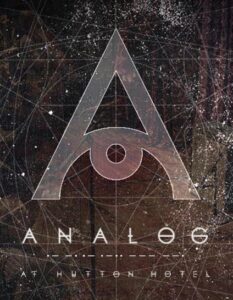 Analog at Hutton Hotel
Analog at Hutton Hotel
NJW & Analog Present: Ty Bailie B3 Trio w/ Special Guests – Friday, April 4 – 8:00 PM ($15-25)
In the first-ever Nashville Jazz Workshop – Analog partnership, B3 organist Ty Bailie and his trio perform with special guests. Highly regarded as a Hammond-organ extraordinaire, Bailie has performance and recording credits with legends such as Gladys Knight, Peter Frampton, Katy Perry, Kenny Burrell, and more.
Analog Jazz & NJW Present: Oscar Peterson Centennial Quartet – Saturday, April 5 – 8:00 PM ($30-65)
The Analog continues its partnership with the NJW, this time to celebrate the centennial of one of the jazz’s greatest pianists, Oscar Peterson, prolific performer and recording artist, and winner of eight Grammy awards. To mark the occasion, the Oscar Peterson Centennial Quartet was formed and will perform with a rotating roster throughout 2025, highlighting the most important performances and recordings of Peterson’s long career.
Analog Soul (multiple shows) – Sundays, April 6, 20, & 27 – 7:00 PM (Free GA / $20 reserved seating)
The Analog continues its Analog Soul series, featuring some of the city’s most promising emerging talent who are redefining soul music. All shows feature Will Davenport and select other artists. These shows are 21+.
Jazz Empowers 2025 Gala – Thursday, April 17 – 7:00 PM ($60-600)
The educational non-profit Jazz Empowers holds its annual gala at the Analog. The evening will feature a performance by the Jovan Quallo Quintet, as well as student performances and testimonials. Tickets include admission to the Gala, the live quartet performance, and a silent auction. Proceeds directly benefit the non-profit.
The Nth Power – detailed above
.
City Winery Nashville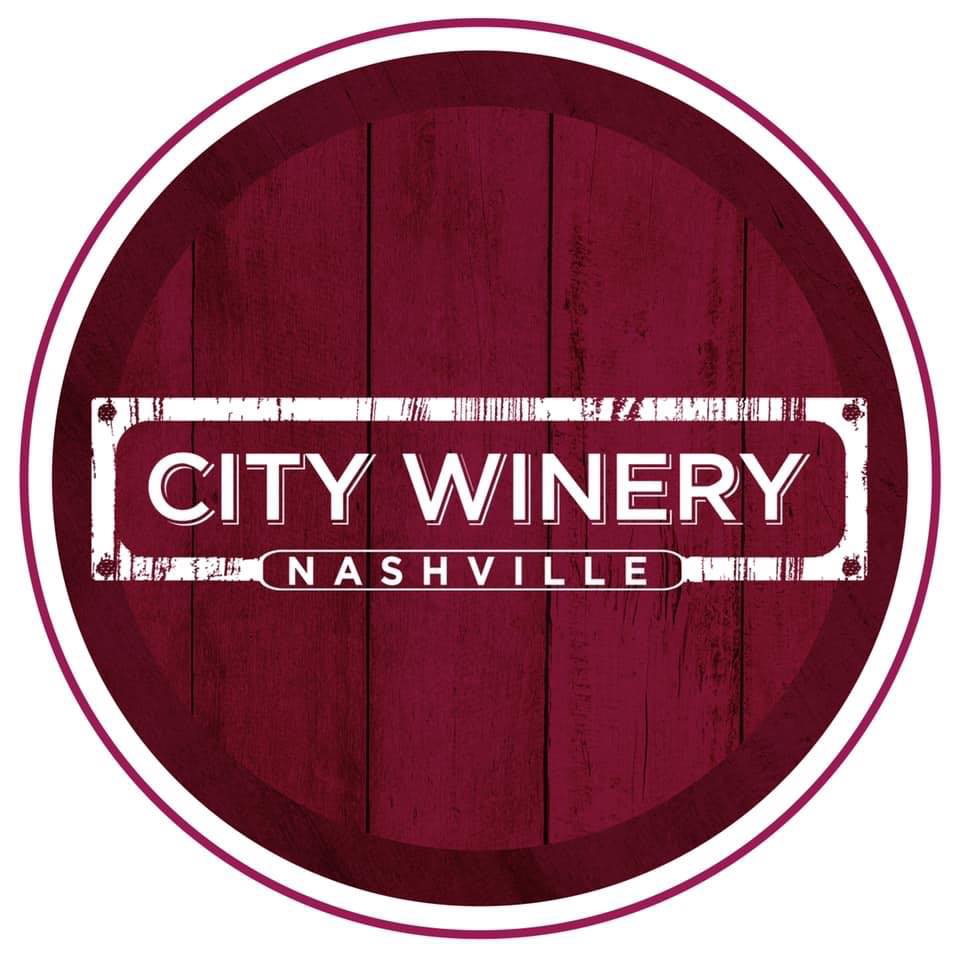
Nashville’s City Winery is a beautiful venue that consistently features top-talent acts that span genres from Jazz to Americana to Hip Hop. The below performances showcase a mix of several genres, but will certainly be of interest to any jazz audience. Enjoy these concerts accompanied by a stellar selection of wine and delicious bites.
Main Stage
Cedric Burnside – Thursday, April 3 – 7:30 PM ($25-40)
Son of blues drummer Calvin Jackson and grandson of legendary blues guitarist and singer R.L. Burnside, Cedric Burnside follows fittingly in the long tradition as a blues guitarist, drummer, and singer/songwriter. His latest album, Hill Country Love, released last year, is the follow-up to his Grammy-winning 2021 album I Be Trying.
The Aristocrats – Tuesday, April 15 – 8:00 PM ($35 advance / $40 day-of-show)
Jazz-rock/fusion icons The Aristocrats come to the Winery. The trio has made an acclaimed name for themselves over these last 12 years they’ve been active, touring consistently and releasing a number of studio albums.
The Fine Colombians – Thursday, April 17 – 7:30 PM ($30-45)
Hailing from my home town of Knoxville, Tennessee, the Fine Colombians are the premier Steely Dan tribute band. I know several of the members personally, and can guarantee that the level of musicianship in this band is extraordinary.
The Lounge
California Guitar Trio – Monday, April 28 – 7:00 PM ($30 advance / $35 day-of-show)
This pioneering trio has been genre-bending for well over two decades, combining their guitar talents to mix folk, rock, classical, jazz, and world music. They have released over 20 albums together and have toured the world, including with icons King Crimson.
The Nashville Jazz Workshop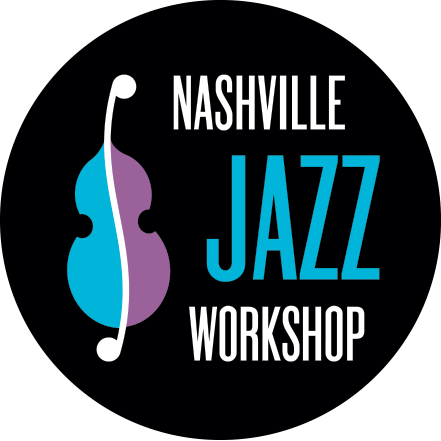
Moving on to Music City’s other great jazz venue, the Jazz Cave at the NJW is a venue with world-class acoustics, which consistently ranks in Downbeat Magazine’s list of Great Jazz Venues in the world. Tickets can be purchased through the Workshop website.
Jazz Cave
Connye Florance – Friday, April 4 – 7:30 PM ($35)
Acclaimed Nashville vocalist Connye Florance comes to the Jazz Cave. Florance has won many accolades, including “Jazz Vocalist of the Year,” a NAMMY (Nashville Grammy) nomination for Album of the Year, Southern Artistry’s “Esteemed Southern Artist” award, and many more.
Jon Cowherd Masterclass – The Art of Spontaneity – detailed above
Pascal’s Triangle ft. Eddie Barbash – Friday, April 18 – 7:30 PM ($35)
Grammy-winning pianist and composer Pascal Le Boeuf leads his ensemble Pascal’s Triangle, frequently seen on the Rudy’s stage, and featuring special guest Eddie Barbash on saxophone. Le Boeuf is known for his boundary-pushing and visionary music, and Barbash is a highly acclaimed saxophonist known for his soulful, high-energy playing.
Alex Graham’s Psychedelic Doomsday Machine – Friday, April 25 – 7:30 PM ($35)
Alex Graham is one of Nashville’s preeminent alto saxophonists, composers, and educators leads his high-energy ensemble featuring some of Nashville’s most celebrated improvisers, including Marcus Finnie (drums), Emmanuel Echem (trumpet), David Rodgers (keys), and Brian Allen (bass).
Jeff Hall – Saturday, April 26 – 7:30 PM ($35)
Vocalist/arranger Jeff Hall returns to Nashville. Once a faculty member of the Workshop himself, Hall returned to his native Baltimore in 2010, and in his career he has released three albums under his own name, and maintains a busy schedule writing, arranging, and performing with a number of different groups, both his own and those led by others.
Community Events
NJW & Analog Present: Ty Bailie B3 Trio w/ Special Guests – detailed above
Rudy’s Jazz Room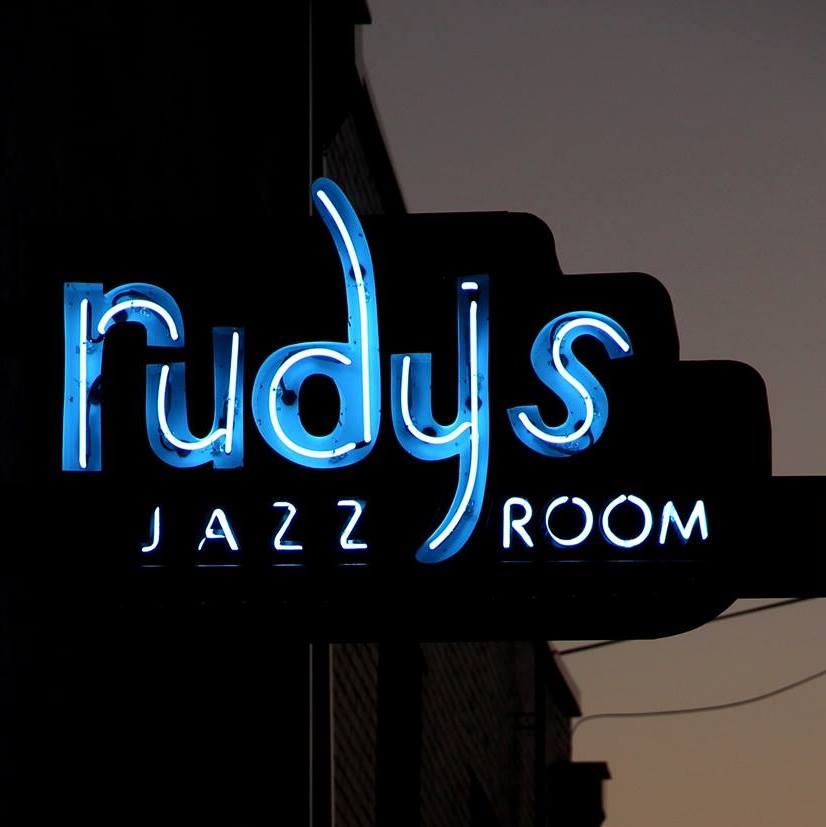
And now we move on to Nashville’s premier jazz club, with its cozy, intimate setting. I’ll start with some of the unique highlights for this month, then follow up with the great regular acts performing. Please note that some shows are one dollar cheaper if you purchase advance tickets. I have listed the door price for all shows.
Rudy’s Highlights
Below are the performances for this month that I’ve picked out as the real can’t-miss shows, some featuring touring artists from out of state, others featuring local artists giving specialized, unique performances. With the new year there are many new faces and new combinations appearing at Rudy’s this month, so now is the perfect time to catch a great new show!
Vanderbilt Latin Jazz Ensemble – Wednesday, April 2 – 6:00 PM ($10)
Vanderbilt’s student Latin Jazz Ensemble takes the Rudy’s stage. Led by Marc Widenhofer, this group performs original music as well as Latin classics in the Cuban and Salsa traditions.
MILEStones: Tribute to Miles Davis – Wednesday, April 2 – 9:00 PM ($15)
The Miles Davis tribute ensemble returns to the Rudy’s stage. This quintet focuses on music from the “great quintets” that Miles led in the 50’s and 60’s.
Rougarou 6-Piece New Orleans Brass Band – Thursday, April 3 – 9:00 PM ($14)
Continuing its repeating “SINdustry night” series on the first Thursday of the month, this New Orleans-style brass band returns to Rudy’s to showcase the club’s Cajun roots. Led by New Orleans native Chris Walters on piano, this band offers as authentic a brass band experience you can find without traveling to the French Quarter. Service industry workers with some form of proof of their employment will receive half off the door price and half price draft been.
Dallas Starke Celebrates Billie Holiday – Friday, April 4 – 5:30 PM ($18)
A staple of the Nashville jazz scene for over two decades, vocalist Dallas Starke brings a special tribute concert to pay homage to one of jazz’s most beloved vocalists, Billie Holiday. Starke was recently nominated for the 2024 Best Female Jazz Vocalist by the National Industry of Music Awards. She will be backed by her quartet for this concert.
Jerome Degey Quartet – Friday, April 4 – 8:00 PM ($20)
Degey is a Nashville-based guitarist originally from Paris, France. His family heritage also features Afro-Caribbean roots, and together with his longtime interest and study of Brazilian culture, these influences create a rather unique musical blend.
Daniel Kuk Trio – Friday, April 4 – 11:00 PM ($10)
Daniel Kuk is a young up-and-coming pianist who, as you can tell from other lineups listed in this newsletter, is already making waves in the scene and proving himself in-demand. He has lived in Nashville most of his life, and started studying music at a very early age. His major influences include Bill Evans, McCoy Tyner, and Bud Powell. His trio will feature Jack Aylor on bass and Ryan Brasley on drums.
Ted Ludwig Organ Trio – Saturday, April 5 – 5:30 PM ($15)
Acclaimed seven-string jazz guitarist Ted Ludwig brings one of jazz’s classic trio formats to Rudy’s. The organ trio is one of my personal favorite lineups for a jazz ensemble, and Ludwig has brought the best with him, with Charles Treadway on organ and Chris Brown on drums.
Joshua Constantine Quartet – Monday, April 7 – 6:00 PM ($12)
Saxophonist Constantine is a former member of Grammy-nominated UNT One O’Clock Lab Band, and student of world-renowned saxophonist Brad Leali. Currently an active performer and educator in Nashville, Constantine tends to pay homage to the classic giants of jazz, honoring composers and performers like John Coltrane, Thelonius Monk, Wayne Shorter, and more. His band features Sam Smith (bass), Michael Green (drums), and Dan La Maestra (piano).
Blue Matter Project ft. Robert Baglione – Wednesday, April 9 – 9:00 PM ($12)
This band offers modern interpretations of straight-ahead and contemporary electric and pop jazz standards. Led by guitarist Robert Baglione, who has performed extensively with names like Michael Henderson, CeCe Peniston, Billy Dickens, and more, the band also features Anthony Belfiglio (keys), Brian Cornish (sax), Leland Nelson (upright bass), and Isaac Velasquez (drums).
Alex Murphy: Exploring the Piano Trio – Thursday, April 10 – 9:00 PM ($15)
Pianist Alex Murphy brings his trio for the first installment of his Exploring the Piano Trio series, focusing on the tradition of this group format specifically.
Phil DeGreg Trio – Friday, April 11 – 5:30 PM ($14)
A longtime presence on the Cincinnati jazz scene, pianist Phil DeGreg leads a trio with Jacob Jezioro on bass and Larry Aberman on drums. DeGreg has toured the world with groups like Woody Herman’s Thundering Herd, and performs regularly in Brazil.
ACE Horns – Friday, April 11 – 8:00 PM ($23)
This trio of horn players returns to Rudy’s with their original group. Roy Agee (trombone), Evan Cobb (sax), and Emmanuel Echem (trumpet) worked together as touring and session musicians for many years before forming their own group, presented here. The trio is backed up by a rhythm section featuring Jon Cowherd, Akil Thompson, and Marcus Finnie.
Wendy Burns’ “Sentimental Journey” – A Tribute to Doris Day – Sunday, April 13 – 6:00 PM ($18)
Prominent Nashville vocalist Wendy Burns presents a special tribute concert to one of jazz’s most beloved singers, Doris Day. The show will be an exploration of Day’s career, featuring Burns’s favorite Day songs backed by an incredible band featuring Luca Chiappara on bass, Melvin Macias on piano, Bryan Brock on drums, Aaron Lessard on guitar, and a special guest appearance by vocalist Rique, paying tribute to Frank Sinatra.
Nate Spratford and Ordinary People – Monday, April 14 – 6:00 PM ($12)
Alto saxophonist Nate Spratford leads his band Ordinary People, which takes inspiration from the idea that, no matter our differences, we are all human beings and face the same struggles and challenges, and this idea is expressed in their music. Spratford relocated to Nashville from the Chicago area to study with Jeff Coffin at Vanderbilt, and quickly made waves in the community as a great young improviser. His band features David Williford on tenor sax, Daniel Kuk on piano, Ian Nussdorfer on bass, and Christian Kyle Burgs on drums.
The MF Art of Listening – Wednesday, April 16 – 9:00 PM ($15)
This highly improvisational group makes its return to Rudy’s, led by drummer Marcus Finnie, who has assembled a highly talented group of musicians to create this unique experience. Finnie himself has toured the world with a host of artists, including Keb’ Mo’, Taj Mahal, Donna Summer, Billy Preston, and many more.
Andrew Golden Presents: Golden Hour – Thursday, April 17 – 9:00 PM ($18)
Led by trumpeter Andrew Golden, Golden Hour is an exploration of the lines between jazz, funk, and electronic soul. The group boasts far-flung influences, and this eclectic mix comes out in their music. An incredible player himself, Golden has assembled some of the industries finest to join him in this project. Keyboardist Kevin Gastonguay (Cory Wong), bassist Alec Newnam (Margo Price), and drummer Nate Felty (Zach Top) comprise the band.
Andy Reiss Quintet – Friday, April 18 – 5:30 PM ($15)
Grammy-winning guitarist Andy Reiss leads a stellar quintet of some of Nashville’s top musicians, including Roland Barber (trombone), Dan Hitchcock (reeds), Jacob Jezioro (bass), and Chris Brown (drums). Reiss, a member of the Time Jumpers, is a prolific recording session musician in Nashville, having recorded with greats like Slim Pickens, Pig Robbins, and Rebe McEntire, among others. His long career and life in music has given him a wide range of influences, from Jimi Hendrix and the Grateful Dead to Charlie Christian and Joe Pass.
Rory and Nalani Jazz Trio – Friday, April 18 – 8:00 PM ($20)
Nashville guitar and multi-instrument virtuoso Rory Hoffman (piano, guitar, saxophone and vocals) teams with another multi-talented performer Nalani (bass and vocals) for a wonderful jazz trio set. Both performers have had extensive performing careers and won numerous awards. Their combination is sure to be a treat.
Alex Murphy Trio – Friday, April 18 – 11:00 PM ($10)
Chicago native pianist Alex Murphy brings his trio back to Rudy’s. He has performed extensively both in Chicago and Nashville, and has shared the stage with greats such as Bobby Broom, Chester Thompson, Joel Frahm, among many others.
Jeff Coffin & The Nu Gurus: EP Release Show – detailed above
Sofia Goodman Trio – Saturday, April 19 – 11:00 PM ($10)
Award-winning Nashville drummer and composer Sofia Goodman leads her trio featuring Matt Twaddle on piano and Leland Nelson on bass. Goodman’s sophomore album, Secrets of the Shore, won Best Jazz Album of 2023 by the Nashville Scene, and she has performed with greats such as Roland Barber and Pascal Le Boeuf. Her next album will be out later this year. Goodman has released three albums, and her group has performed throughout the US and Canada, including a headlining spot at USM Jazz & Blues Festival.
Bruce Dudley Trio – Friday, April 25 – 5:30 PM ($15)
Bruce Dudley is an accomplished and acclaimed jazz pianist who is a Steinway Concert Artist and has been performing jazz for over forty years with many recording credits to his name, both as sideman and bandleader. This trio will feature renowned Nashville musicians Jim Ferguson on bass and Joshua Hunt on drums.
Aaron Lessard Group – Friday, April 25 – 11:00 PM ($10)
Nashville jazz/fusion guitarist Aaron Lessard will perform a mix of original compositions and covers with his ensemble. In Lessard’s music can be heard influences from Pat Metheny, Mike Stern, John Scofield, and more.
Rudresh Mahanthappa Hero Trio – detailed above
Marc Payne Quartet – Wednesday, April 30 – 9:00 PM ($15)
One of Nashville’s most talented up-and-coming pianists Marc Payne will lead his trio. Payne has been praised for his diversity and wide knowledge of many jazz styles. He has spent his life in Nashville soaking up many different sounds and styles, and this diversity comes through in his masterful playing.
Rudy’s Regulars
Don Aliquo (multiple performances)
One of Nashville’s most active and accomplished saxophonists, Aliquo will be leading performances several times this month, both in trio and quartet format.
Don Aliquo Quartet – Saturday, April 5 – 8:00 PM ($20) & Saturday, April 19 – 5:30 PM ($16)
The first of these quartet performances will feature Bruce Dudley (piano), Jack Aylor (bass), and Ryan Brassley (drums), while the second will feature Daniel Kuk (piano), Jack Aylor (bass), and Larry Aberman (drums).
Don Aliquo Trio – Friday, April 11 – 11:00 PM ($10)
Jonathan Wires Quartet – Saturday, April 5 – 11:00 PM ($10)
Nashville bassist Jonathan Wires returns as bandleader in a quartet setting.
Sully’s Swingin’ Sunday Supper – Sundays, April 6 & 20 – 6:00 PM ($12)
Every other Sunday, Rudy’s features a Sunday dinner, with one of Music City’s top bassists Jimmy Sullivan leading a swingin’ jazz band featuring rotating special guests, for which a unique dinner special is served just for the show.
Viktor Krauss – Wednesday, April 9 – 6:00 PM ($12)
Viktor Krauss is a bassist that has called Nashville home since 1992, and has over 600 credits to his name as either bassist, composer, or producer.
Jody Nardone Trio (2 shows) – Saturday, April 12 – 5:30 PM ($17) & Sunday, April 27 – 6:00 PM ($16)
Prominent Nashville pianist Jody Nardone brings his trio to Rudy’s for a classic jazz set. With a growing national reputation, Nardone seamlessly shifts from the “whispered beauty of Bill Evans to the percussive flights of McCoy Tyner.” (Michael McCall, Nashville Scene)
Pat Coil Trio (2 shows) – Saturday, April 12 – 8:00 PM ($21) & Saturday, April 26 – 5:30 PM ($15)
All-star Nashville pianist Pat Coil returns with two trio performances, though both of these will feature a special guest guitarist performing with the trio. As you all probably know by now, Coil is a highly in-demand pianist in Nashville and just about everywhere else, having toured extensively both nationally and internationally. The first of these trio shows will feature Brian Allen (bass), Jordan Perlson (drums), and Ted Ludwig (guitar), while the second will feature Jacob Jezioro (bass), Danny Gottlieb (drums), and Pat Bergeson (guitar).
Geoff Pfeifer Quartet (2 shows) – Saturdays, April 12 & 26 – 11:00 PM ($10)
Playing a mix of Wayne Shorter tunes and originals, Geoff Pfeifer brings gritty, edgy, genuine NYC-style jazz to Rudy’s stage with his Quartet.
Bizz Bigsby – Wednesday, April 16 – 6:00 PM ($15)
Nashville native Bizz Bigsby shares his very personal music which tells the story of his life, influenced by everyone from Bill Withers to George Jones to James Taylor.
Re-Evolution – Mondays, April 21 & 28 – 6:00 PM ($12)
This five-piece band is heavily influenced by classic jazz cutting-edge artists like Thelonius Monk, Wes Montgomery, John Coltrane, Bill Evans, and more. The band consists of Brian Cornish on saxophone, Regi Wooten on bass, Daryl Johnson on drums, Adam Charney on guitar and Alex Murphy on piano.
Dana Robbins Quintet – Wednesday, April 23 – 6:00 PM ($12)
GRAMMY-winning saxophonist Dana Robbins pays tribute to the Soul Jazz sound of the late 60’s and early 70’s, celebrating artists such as Les McCann, Eddie Harris, Jimmy Smith, and more. Robbins has either recorded or performed with many artists, including Keb’ Mo’, Aretha Franklin, Taj Mahal, Keith Urban, and more. Her band features David Santos (bass), Wes Little (drums), Phil Hughley (guitar), and Darius Mines (piano/B3 organ).
Regi Wooten & Friends – Wednesday, April 23 – 9:00 PM ($15)
Coming from a distinctly talented musical family, Regi Wooten is one of the most innovative and dynamic musicians on the scene today, pushing the boundaries of the traditional genres. Equally at home playing Hendrix as Wes Montgomery, Wooten assembles a group of some of Nashville’s best musicians to offer a night steeped in funk, jazz, soul, blues and rock.
Rebecca Carlson – Thursday, April 24 – 9:00 PM ($14)
Jazz and blues vocalist Rebecca Carlson has made a name for herself across the country, taking stints based in New York City, Tucson, Los Angeles, and now Nashville. An extensive touring and recording career has made her quite an in-demand performer.
Stephanie Adlington – Friday, April 25 – 8:00 PM ($23)
Another frequent visitor to the Rudy’s stage, award-winning vocalist, songwriter and vocal coach Stephanie Adlington is known as the “Siren of the South,” with an “unrivaled” take on the Great American Songbook.
Cliff Richmond & The CliffNotes – Wednesday, April 30 – 6:00 PM ($14)
Guitarist and vocalist Cliff Richmond’s band always features some of Nashville’s top talent, and presents a great blend of soulful, swinging, and funky jazz.
Giovanni Rodriguez & 12 Manos – Every Monday – 9:00 PM ($15)
A favorite on the Nashville Latin and jazz scene, multi-instrumentalist Giovanni Rodriguez presents an electric night of salsa, along with his band consisting of Rodriguez (timbales/vocals), Melvin Macias (piano/vocals), Yosvany Cordero (congo/bongo), Michael S. Morton (flute/vocals), and Isoel Villarrubia (bass).
Hot Club Gypsy Jazz – Every Thursday – 6:00 PM ($12)
Every Thursday night, Rudy’s honors its New Orleans and French roots by celebrating the vibrant music of Gypsy Jazz. These nights feature a variety of small groups either led or curated by New Orleans native Brook Sutton, all performing music in the style of the great Django Reinhardt and Stephane Grapelli. The bar will feature French Quarter-inspired cocktails as well as gumbo and beignets. Come out for as authentic a night as you can get without a trip to the French Quarter.
Rudy’s Jazz Jam – Every Sunday – 9:00 PM ($10)
I couldn’t make a list of Rudy’s events without including a shout-out for the regular weekly Jazz Jam the club hosts every Sunday night. Whether you are a jazz musician and you want to jam with your fellow artists, or you just want to come and enjoy what the local talent has to offer, the Jazz Jam is a great way to end your weekend.
The Underdog Nashville
Jack Ruch and Adam Wakefield Trio – Every Thursday– 7:00 PM ($10)
Jack Ruch returns this month with his organ trio, a classic jazz format.
Guthrie Trapp Trio – Every Monday – 8:00 PM ($10)
One of Nashville’s preeminent guitar talents will perform several times at the Underdog. More blues and country than jazz, Trapp’s intricate and highly technical guitar playing will surely interest those who love the technicality of jazz music. His trio features Jordan Perlson on drums and Tim Marks on bass.
University Jazz
The university semester is well under way, which means student, faculty, and guest concerts for the public to enjoy.
Vanderbilt – Blair School of Music 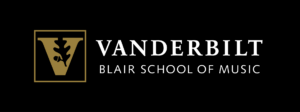
Blair Big Band – Thursday, April 3 – 8:00 PM ($10) (Ingram Hall)
Vanderbilt’s student Big Band, directed by Ryan Middagh. Tickets are free to Vanderbilt community.
Blair Jazz Combos – Sunday, April 6 – 8:00 PM (Free w/ tickets required) (Turner Recital Hall)
Big Bad Voodoo Daddy – detailed above
Regular Nashville Hangs
Bohemia After Dark: Live Jazz Band with Andrew Golden – Every Monday – 8:00 PM (Old Glory)
Tuesday Bluesday w/ Shantelle & The Juke Joint Band – Every Tuesday – 6:30 PM (Rawhides)
Weekly blues night with a different special guest each week.
Dinner & A Show – Live Jazz Band – Every Friday – 7:00 PM (Flamingo Cocktail Club)
Living Room Sessions – Every Friday & Saturday – 8:00 PM (W Nashville Hotel)
Regular weekly showcase featuring local indie, jazz, funk, and R&B bands.
Eastside Jam – Every Sunday – 9:00 PM (Inglewood Lounge)
This is not a traditional jazz jam playing standards, but rather an improv jam, but any jazz player or listener will still be interested!
Nightly Jazz at Skull’s Rainbow Room – 7:30 PM
Nightly Jazz at Sinatra Bar & Lounge – Live Music daily
Live Jazz at Skye Lounge – Every Friday & Saturday–7:30 PM
NJW at Char Steakhouse – Evenings and Sunday Brunch
A Review of ‘Human Resources’ presented by Nashville Story Garden and OZ Arts Nashville

As a trailblazer that continues its commitment in supporting the out-of-the-box local and international theatrical expression, OZ Arts Nashville doesn’t seem to shy away from transforming itself to accommodate the needs of the artists it hosts.
For Human Resources, written by Nate Eppler (award winning playwright and director of Playground writing incubator), directed by Lauren Shouse (award winning director, currently Assistant Professor of Theatre Directing at Middle Tennessee State University) and devised and developed by Nashville Story Garden, the stage is turned into an arena, one of the more common formats of contemporary experimental theater. Following Geoff Sobelle’s Food, this is the second time I experienced a performance at OZ Arts Nashville in this format. It is very fitting for a performance that aims to expose an exaggerated portrait of corporal dynamics, its hierarchies, and the meaning(lessness) of the concept of work and work-life in today’s success-driven positivist warp.
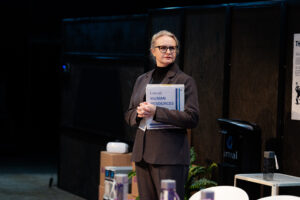
Human Resources is a purposefully fractured theatrical experience, delving into the idle work lives of the manufacturers of a pharmaceutical corporation whose external image is an inverted facade of the values it promotes. The staging has an immersive nature, and it invites the audience to a thoroughly curated encounter. A somewhat participatory experience with orchestrated transitions in perspective that may pose a challenge for those with mobility issues, which is why the promotion of the performance should have advised this feature. The performance handout states the nature of audience participation; however, the handouts are only given out once someone is entering the stage and has already committed to experiencing this show.
The tone is set at the foyer or behind the limits of what has been taken in as a stage: filing cabinets, folded computer parts, screens where Dr. Goodapple (Geoff Davin), the representative of Liminal, promotes the ten tenets of Liminal Corporation, under impersonal jazz tunes. A commercial promoting Zealiva, a drug that improves productivity at work and helps workers fulfill Liminal’s tenets, occasionally takes over the screens, reminding us of the unconsented commercials to products we are exposed to in our everyday lives. There’s a witty wordplay happening right there: ‘liminal’, or in between, which gets further opened during the performance and ‘zealiva’, a drug that activates zeal and pushes workers to feel alive, when they are actually feeling demotivated because they hate their jobs!
In the waiting room, the audience is also offered signature “9 to 5 Collins drinks”, promoted as fully utilizing citrus fruits. Unmistakably, a reference to the feminist comedy Nine to Five directed by Colin Higgins, starring Jane Fonda, Lily Tomlin, Dolly Parton, Dabney Coleman, Elizabeth Wilson, and Sterling Hayden.
The Liminal staff, apropos, the actors of the play are promoted on a company poster, and at another corner, a tribute is paid to the deceased worker Judy, whose values have been calculated in percentiles within the scale of the company, while later, the reaction to her death on her work desk during her weekend overtime has been memorized by the workers and is robotically replayed with a mimicked gesture and the wording: “So sad, so sad!”.
The set design (Diana DeGarmo), props design (Madeleine Hicks) and lighting design (Phillip Franck) turn the OZ Arts Nashville stage arena into a floor of the Liminal Pharmaceuticals’ headquarters. The branding of the office materials including the Liminal logo (designed by Chris Ammons) looks so genuine, it pushes one to question whether we should believe in the legitimacy of anything that has a brand design. Boxes of Zealiva are spread all over and we can see the staff arriving and saluting the logo of the company with militaristic gestures (Is this what one could call Corporate Patriotism?), before they disappear into their cubicles, performing motorized and repetitive movements. A worker’s chair has its nylon wrapper still on, a signifier of the sterility, discomfort, and the detachment of the workers from their working space.
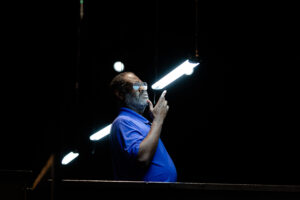
Every few minutes, a Squid Gameish sound (sound design by Tasha AF Lemley) announces ideological breaks to remind the workers of the tenets of the corporation. This is pleasingly choreographed and is a testament to Nashville Story Garden’s dedication to extensive teamwork in devising their works and their emphasis on incorporating physicality to storytelling on stage.
The fourth wall in this performance is broken when the audience members are addressed as “external stakeholders” alias consumers. This also alludes to the awareness that the actors are being watched, another reference to George Orwell’s 1984, although they don’t hesitate to go through their full arch which is ardent and rocky.
The simulation of utilitarianism is broken when Harper (Lauren Berst, also co-director of Nashville Story Garden) comes in to address an HR issue: an anonymous complaint of a worker from this particular floor. While the complaint boxes are available, based on how the rest of the storyline develops, complaints not only seem to not lead to the improvement of the work environment, to the contrary, they may cause even more harm and might backfire. Harper’s language and behavior are an exact portrayal of an HR representative, and this produces a lot of humor when heard on stage and accompanied by exaggerated grotesque acting. The play is filled with sparkling farcical punchlines such as “empty seats disrupt focus”, “check the pulse”, or “Jargon will not save you!” (- Andie, played by Meggan Utech) that are familiar to the audience and burst them into laughter, same as when Dr.Goodapple wears a VR set, to enter the “profit envisioning center”.
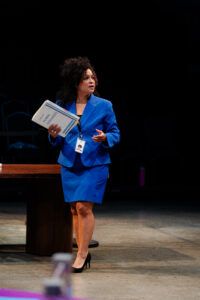
As we rotate our seats, we get to experience the work life of those in the cubicles. Other critical commentaries on corporate work life such as workers not fully knowing their jobs because of their partial training, as in the case of Beenz (Tamara Todres, also co-director of Nashville Story Garden) or Blake (Joe Mobley), the only one who knows how to do a certain job of handling cables, speak to the absurdity of bureaucracy that recalls Franz Kafka’s remarks on the establishment. While we can partially hear the drama on the other side of the cubicles, we can’t see it nor are able to fully focus on what’s happening in front of us, so we’re curious, distracted, disturbed and anxious because we are missing out! This fragmented perception intends to pose the crucial question that the production team of this performance wants the audience to ask themselves: How can we relate to anything if we’re constantly being fed with fractured experiences?
A significant breaking point occurs with the empowerment of the janitor Loggs (Bakari King) when he breaks his observational silence and expands his role to what others at this office envy: that his life extends beyond the walls of Liminal. Thus, the play also becomes a reflection on loneliness and the meaninglessness of the life-work split which undoubtedly made many audience members whisper the name of the TV series Severance.
The performance ends in a rather depressing point. Andie’s declaration: “There’s always one more step that keeps them where they are and us where we are” is backed up by the immediate replacement of the holder of the leather chair, while the lower ranked workers will go back to their everyday routine.
Human Resources, is undoubtedly one of the most experimental and poignant theater pieces developed and staged in Nashville in the past few years. The impressive focus on details and the hard work of the performance team was clearly visible. The mobility issue was skillfully managed by the OZ Arts staff, but a mobility warning would have been needed for this performance.
Norma y la Reinvención de la Tragedia: Reflexiones desde Florencia
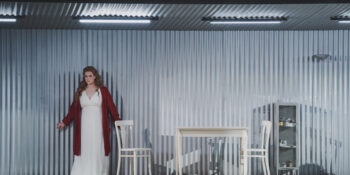
Version in English Here
En la cuna del humanismo cada dimensión del ser se erige en un fascinante balance entre el pasado y la contemporaneidad. La introspección espiritual resuena en acústicas esferas impregnadas de pigmentos y de ambición. La estética se sobrepone a la dicotomía moral y los obstinados lapsos de ingenio desprenden un aroma que distrae a la conciencia. Aunque ajena a la abstracción florentina, la esencia de Norma alberga intricados desafíos internos en su efigie de perfección.
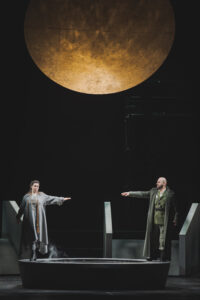
Los días 9,11,16 y 18 de marzo, el Teatro Maggio Musicale Fiorentino (antiguo Teatro Comunale) recibe por sexta vez el montaje de la ópera Norma de Vincenzo Bellini. La moderna maquinaria escénica dio libertad a las vanguardistas aspiraciones del director de escena Andrea De Rosa para que la experiencia visual acentuara las particularidades de la historia. El diseño circular semi inclinado de madera ámbar del auditorio, se integró perfectamente con la representación en bronce de la casta diva cuyo esplendor cubrió al público durante gran parte de la obra. El reloj marcaba las 8 P.M. en punto cuando el espíritu marcial de la obertura se abrió paso en una sólida interpretación de la Orquesta del Maggio Musicale Fiorentino. El telón se levantó revelando a un grupo de soldados camuflados con tan solo sus ojos descubiertos que sometían a los guerreros galos halándolos de sus extensos cabellos. A partir de este momento el entendimiento se separó de la escucha para tratar de descifrar la tan ecléctica representación. El atuendo de las milicias causó estupor; en la incapacidad de comprender inmediatamente esta alegoría, mi subconsciente se sobrecogió ante lo que puede suponer un inminente peligro de deshumanización. Conforme la escena iba avanzando fue posible distinguir que los largos cabellos rubios de las guerreras y guerreros se sujetaban de sus cubrecabezas y de la armadura, respectivamente.
Andrea de Rosa argumenta que su estilo teatral se enfoca en “observar la actualidad desde otros ángulos” y confirma que los soldados modernos representan la ferocidad de milicias como el ejército estadounidense perpetrando torturas en la prisión iraquí de Abu Ghrab. Esta visión contemporánea se combina con rituales arcaicos en una escena siguiente, en la que, vigilados por el enemigo, los galos a través de la danza sumergieron, sacudieron y golpearon los mechones de cabello contra el agua de un pozo que se erigió como altar ceremonial en medio del escenario. La instalación de claroscuro recreó la atmósfera justa para la mítica aria insignia del bel canto, “Casta Diva.” La soprano australiana Jessica Pratt, reconocida por su maestría en este exigente estilo, articuló cada figura con una frescura y propiedad tales que resultaba difícil creer que este fuera su debut como Norma. El público no logró contenerse e irrumpió la exhalación final con un estruendoso aplauso.
Bellini parece entregar muy pronto la joya de su composición; no obstante, la suprema pericia en el desarrollo melódico, donde cada nota está cuidadosamente pensada para potenciar la prosodia del texto, da lugar a una sucesión de arias, duetos y tríos, que son una fábula para los sentidos. El director Michele Spotti complementa esta opinión con que la “música misma es la palabra” y que a través de la conexión instrumental entre cada escena “el drama fluye en una corriente de emociones y sensaciones que mantienen siempre vivo el discurso musical.” En efecto, ese laberinto de pensamientos que atraviesan Norma, Adalgisa y Pollione, contribuye a que la composición se estimule con repentinas transiciones anímicas. Un ejemplo puntual es el recitativo confesional de Pollione (Mert Süngü) y Flavio (Yaozhou Hou) “Svanir Le Voci.” El estilo declamatorio de Bellini suele tener una articulación más versátil para dar variedad a las prolongadas líneas que dedica a Pollione.
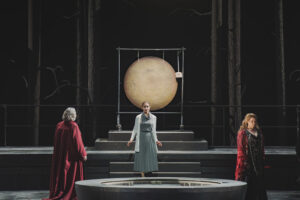
Si el desprendimiento de la pesada cubierta del pozo que en su lento ascenso fue encarnando la sustancia del satélite natural, parecía ser el efecto más impactante del montaje, el inicio de la séptima escena fue aún más insospechado. El escenario se eleva hasta la mitad, revelando en las profundidades la habitación de un búnker amoblado y protegido con dos puertas de seguridad a los lados. Dos columnas dividen el espacio en tres secciones, separando las distintas secuencias teatrales y musicales que ocurren simultáneamente. En el primer cuadrante, un camarote alberga a una niña y un niño en pijama, que retozan y duermen. Norma, ahora luciendo un atuendo doméstico, reafirma la coexistencia de dos universos. El personaje de Clotilde (Elizaveta Shuvalova) está enteramente comprometido con proteger a los infantes del caos familiar y no pierde oportunidad para estrecharlos y acariciarlos. Un exceso de afecto que roza lo empalagoso. Sin embargo, los niños buscan este contacto, extendiendo sus abrazos a cada personaje presente.
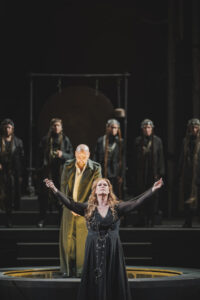
Andrea de Rosa recrea este sobrecogedor lienzo para evidenciar que, independientemente de la época, los niños han sido víctimas de crisis intrafamiliares y de la guerra, condenados al aislamiento y al encierro. Fue desgastante presenciar en segundo plano a dos criaturas atrapadas en la monotonía, cuyos altibajos emocionales reflejaban los dilemas de su madre. A pesar de la zozobra, Bellini entrega duetos inspiradores como “Mira o Norma.” La elaborada y cristalina homofonía entre Norma y Adalgisa (Maria Laura Lacobellis) desplegó un resplandor prismático en medio del lúgubre recinto. Posteriormente Pollione encara su falta y se une a la discusión femenil en complicidad melódica con la orquesta.
La introducción al segundo acto ya no tiene un tono marcial, y la sentida melodía de los cellos vaticina una despedida. El escenario regresa al universo de los galos, pero la cuántica introduce un nuevo elemento surrealista: un arsenal de pistolas y fusiles para enfrentar a las milicias. Norma también reemplaza la daga de la historia por un arma de fuego. Sin embargo, no aparece con ella en el búnker con la intención de apagar la vida de sus hijos, un detalle que humaniza aún más al personaje en esta versión. El altar se transforma en una hoguera abstracta, y los mechones de cabello vuelven a participar como símbolo ceremonial antes de convertirse en lazos que amordazan a Norma y Pollione en su sacrificio mortal. La monumental polifonía del final en la que las líneas de Oroveso (Riccardo Zanellato) y el coro se entrelazan suplicantes soportadas por el contundente anuncio de los cornos y la percusión, nos gratifica con la última sorpresa teatral. El escenario se eleva nuevamente y las paredes del búnker están recubiertas de ansiosos garabatos infantiles y palabras como “casa” y “mamma.” Recostada sobre este elocuente muro, yace la niña en un deseo infructuoso de liberarse y a unos pasos su hermano, en conjunto estado de locura.
Un público familiarizado con la pureza del repertorio italiano estalló en ovaciones para el reparto, el coro y la orquesta. La atemporalidad del montaje y la creatividad en la escenografía y el vestuario, se tradujeron en una exhibición de impecable diseño. Michele Spotti custodió cada nota para que la esencia romántica permaneciera impoluta, y la orquesta encauzó cada dinámica y cada fraseo en amplia excelencia.

